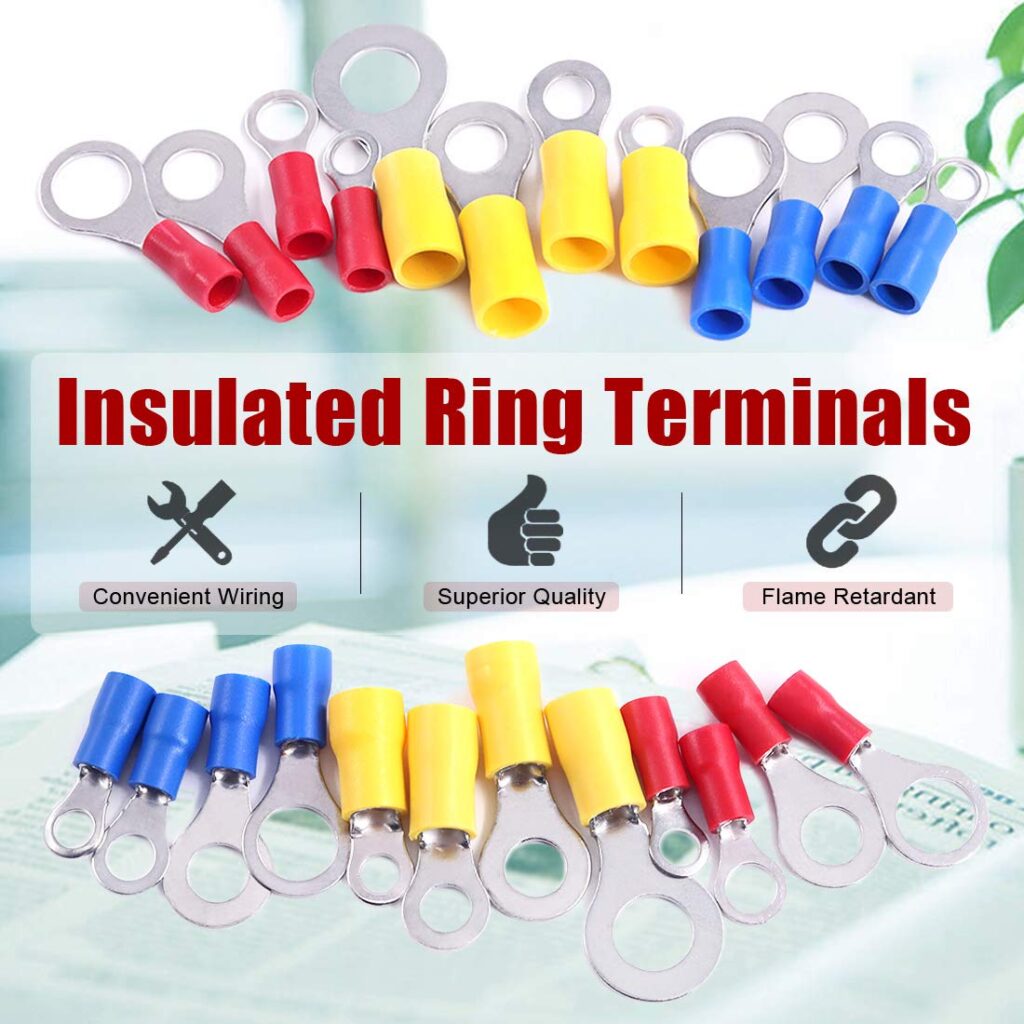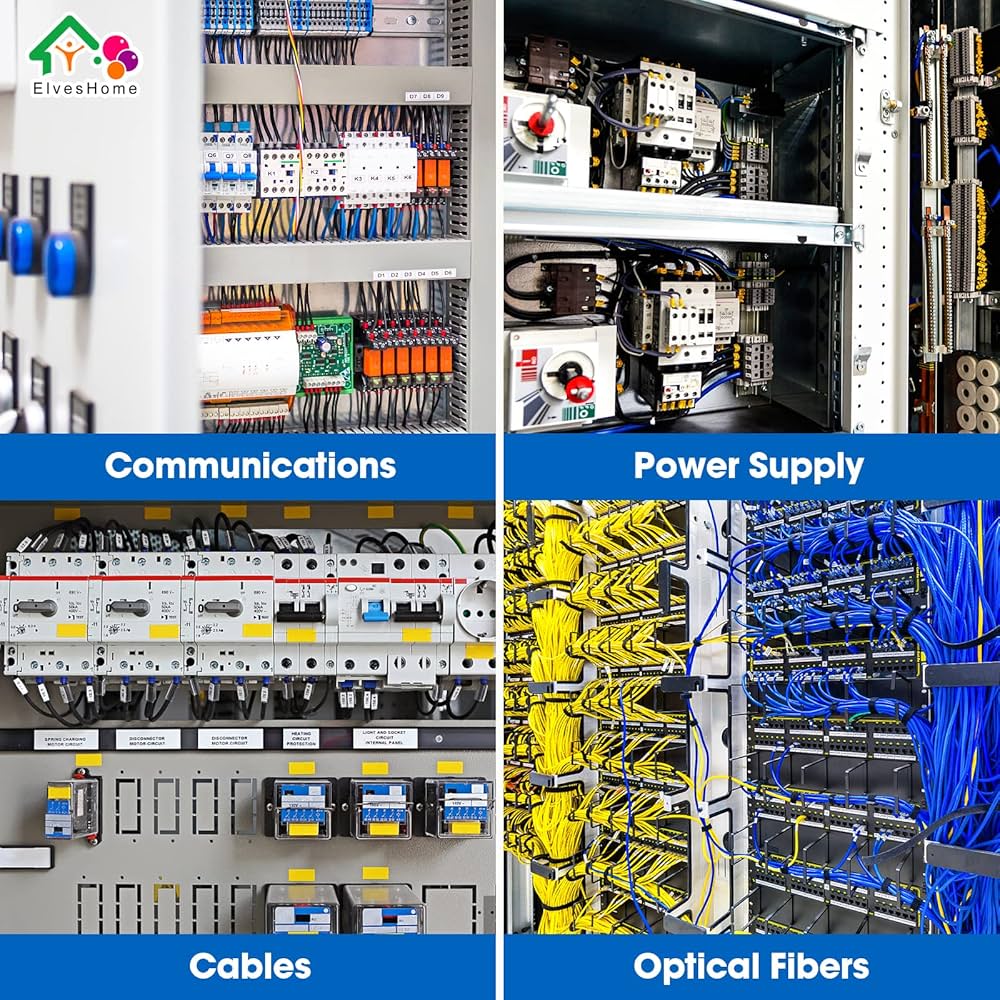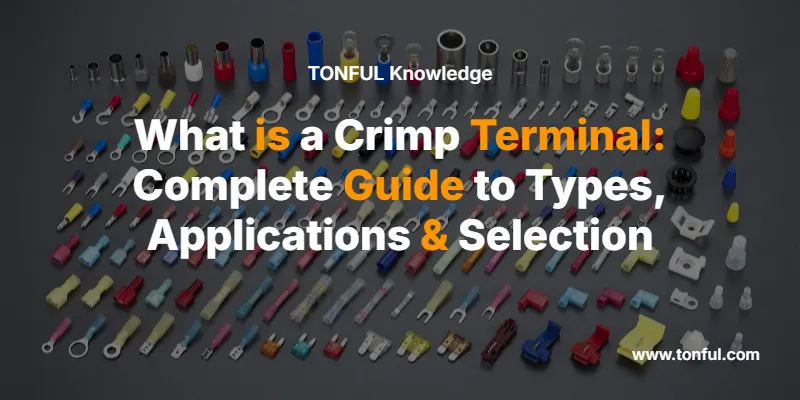A crimp terminal is a electrical connector that permanently attaches to the end of a wire using a crimping tool, creating a secure mechanical and electrical connection without soldering. Crimp terminals provide a reliable, vibration-resistant connection method used extensively in automotive, industrial, and residential electrical applications.
Crimp terminals eliminate the need for soldering while providing superior connection strength and electrical conductivity compared to twist-on connectors or tape connections. They’re essential components in professional electrical work, meeting strict safety standards and code requirements.
What Makes Crimp Terminals Different From Other Wire Connectors
| Connection Method | Permanence | Tools Required | Vibration Resistance | Professional Use |
|---|---|---|---|---|
| Crimp Terminals | Permanent | Crimping tool | Excellent | Standard |
| Twist-on Wire Nuts | Removable | None | Good | Common |
| Solder Connections | Permanent | Soldering iron | Excellent | Professional |
| Push-in Connectors | Removable | None | Fair | Limited |
| Screw Terminals | Removable | Screwdriver | Good | Equipment only |
Expert Tip: Crimp terminals provide the optimal balance of connection security, installation speed, and code compliance for most electrical applications.
Key Types of Crimp Terminals
Ring Terminals

Purpose: Secure connection to screw or bolt terminals
- Applications: Ground connections, battery terminals, electrical panels
- Sizes: 22-4 AWG wire capacity
- Advantage: Cannot accidentally disconnect from vibration
Spade Terminals
Purpose: Quick-disconnect connections to blade terminals
- Applications: Automotive accessories, appliances, control circuits
- Sizes: 22-10 AWG standard range
- Advantage: Removable connection without tools
Butt Splice Connectors
Purpose: Joining two wire ends permanently
- Applications: Wire repairs, circuit extensions, harness assembly
- Sizes: 22-4 AWG standard sizes
- Advantage: Maintains wire gauge capacity through connection
Quick Disconnect Terminals
Purpose: Removable blade-style connections
- Applications: Automotive, appliances, low-voltage control
- Sizes: 0.110″, 0.187″, 0.250″ blade widths
- Advantage: Color-coded sizing with secure retention
Crimp Terminal Wire Gauge Compatibility Chart
| Terminal Size | Wire Gauge Range | Color Code | Typical Applications |
|---|---|---|---|
| 22-18 AWG | 22, 20, 18 AWG | Red | Control circuits, automotive accessories |
| 16-14 AWG | 16, 14 AWG | Blue | General electrical, appliances |
| 12-10 AWG | 12, 10 AWG | Yellow | High-current circuits, HVAC |
| 8-6 AWG | 8, 6 AWG | Gray/Black | Service panels, large motors |
Safety Warning: Always verify wire gauge matches terminal capacity. Undersized terminals can overheat and create fire hazards.
How Crimp Terminals Work
Crimp terminals create electrical connections through controlled deformation that cold-welds the terminal barrel around the wire strands. Here’s the step-by-step process:
Professional Crimping Process
- Strip Wire to Proper Length
- Remove insulation 1/4″ to 3/8″ from wire end
- Use proper wire strippers to avoid strand damage
- Verify no stray strands extend beyond terminal barrel
- Select Correct Terminal Size
- Match terminal gauge rating to wire size exactly
- Check color coding for quick verification
- Ensure barrel diameter accommodates wire bundle
- Insert Wire into Terminal Barrel
- Push wire fully into terminal barrel
- Verify wire strands don’t extend past barrel
- Position terminal in crimping tool die
- Apply Proper Crimping Pressure
- Use calibrated crimping tool for terminal type
- Apply steady, complete pressure until tool releases
- Check crimp forms proper hexagonal or rectangular shape
- Test Connection Integrity
- Perform gentle pull test on completed connection
- Verify no wire movement or strand separation
- Check for proper terminal shape and no cracks
Expert Tip: Proper crimped connections should show slight wire strand deformation without breaking individual strands.
Crimp Terminal Applications by Industry

Automotive Applications
- Battery cables: Heavy-duty ring terminals for secure connections
- Ignition systems: High-temperature rated terminals
- Lighting circuits: Quick-disconnect terminals for easy service
- Audio systems: Gold-plated terminals for signal integrity
Industrial Applications
- Motor connections: High-current ring and spade terminals
- Control panels: Insulated terminals for safety compliance
- Machinery harnesses: Heat-resistant terminals for harsh environments
- Safety circuits: UL-listed terminals for code compliance
Residential Applications
- Electrical panels: Ring terminals for ground and neutral connections
- Appliance repairs: Standard spade terminals for replacements
- Low-voltage systems: Small terminals for thermostats and doorbells
- Automotive repairs: Replacement terminals for vehicle maintenance
Professional Selection Criteria
Material Considerations
Copper Terminals:
- Best for: General electrical applications
- Advantages: Excellent conductivity, code compliant
- Limitations: Requires protective plating in corrosive environments
Brass Terminals:
- Best for: Marine and outdoor applications
- Advantages: Natural corrosion resistance
- Limitations: Lower conductivity than copper
Aluminum Terminals:
- Best for: Aluminum wire connections only
- Advantages: Prevents galvanic corrosion
- Limitations: Requires antioxidant compound
Insulation Types
| Insulation Type | Temperature Range | Applications | Code Compliance |
|---|---|---|---|
| Vinyl (PVC) | -40°F to 221°F | General purpose | UL Listed |
| Nylon | -40°F to 302°F | High-temperature | UL Listed |
| Heat Shrink | -67°F to 275°F | Moisture protection | UL Listed |
| Non-Insulated | Varies by material | Panel connections | UL Listed |
Safety Requirements and Code Compliance
National Electrical Code (NEC) Requirements
- Section 110.14: Connection methods must be suitable for wire material and ampacity
- Section 300.15: Connections must be accessible for inspection
- Section 110.3(B): Use only UL-listed terminals for code compliance
Professional Installation Standards
- Crimp connections must meet manufacturer’s torque specifications
- Heat-shrink insulation required in damp locations
- Pull tests required for critical safety connections
- Documentation required for commercial installations
Safety Warning: Never use automotive-grade terminals in residential wiring. Building code requires UL-listed components only.
Troubleshooting Common Crimp Terminal Problems
Connection Failures
Symptom: Loose or intermittent connections
- Cause: Undersized terminal or insufficient crimping pressure
- Solution: Re-crimp with properly sized terminal and calibrated tool
Overheating Issues
Symptom: Heat damage or melted terminals
- Cause: Oversized wire for terminal rating or poor connection
- Solution: Verify ampacity ratings and remake connection
Corrosion Problems
Symptom: Green/white buildup on connections
- Cause: Moisture exposure or dissimilar metals
- Solution: Use marine-grade terminals and dielectric grease
Wire Strand Separation
Symptom: Individual strands breaking during crimping
- Cause: Excessive crimping pressure or wrong tool
- Solution: Use properly calibrated crimping tool for terminal type
Essential Tools for Professional Crimp Terminal Work
Crimping Tools by Application
Ratcheting Crimp Tools:
- Best for: High-volume professional work
- Advantages: Consistent pressure, one-handed operation
- Price range: $50-$200
Manual Crimp Tools:
- Best for: Occasional use, small projects
- Advantages: Lower cost, simple operation
- Price range: $15-$50
Hydraulic Crimpers:
- Best for: Large gauge terminals (4 AWG and larger)
- Advantages: High pressure capability, precise control
- Price range: $200-$800
Expert Tip: Invest in a quality ratcheting crimper with removable dies for professional results and long-term reliability.
When to Use Crimp Terminals vs. Other Connection Methods
Choose Crimp Terminals When:
- Making permanent connections in vibration-prone environments
- Working with stranded wire in electrical panels
- Connecting to screw or blade terminals
- Code compliance requires UL-listed connections
- Speed and consistency are priorities
Choose Alternative Methods When:
- Connections need frequent disconnection (use plugs/sockets)
- Working with solid core wire (direct connection often better)
- High-frequency signals require soldered connections
- Temporary connections needed (use wire nuts)
Quick Reference: Crimp Terminal Selection Guide
By Wire Gauge
- 22-18 AWG: Red terminals, automotive and control circuits
- 16-14 AWG: Blue terminals, general residential use
- 12-10 AWG: Yellow terminals, appliances and larger circuits
- 8-4 AWG: Gray/black terminals, service entrance and heavy loads
By Application
- Battery connections: Tinned copper ring terminals
- Automotive accessories: Heat-resistant spade terminals
- Marine applications: Tinned terminals with heat shrink
- Panel connections: UL-listed ring terminals only
By Environment
- Indoor dry: Standard vinyl insulated terminals
- Outdoor/damp: Heat shrink or marine grade terminals
- High temperature: Nylon insulated terminals
- Corrosive: Tinned copper with protective coating
Professional Installation Best Practices
Pre-Installation Checklist
- ✓ Verify terminal gauge matches wire size exactly
- ✓ Confirm UL listing for building code compliance
- ✓ Check environmental rating for installation location
- ✓ Ensure crimping tool is calibrated and appropriate
Installation Process
- Calculate wire strip length using terminal manufacturer specifications
- Strip wire cleanly without nicking individual strands
- Insert wire fully into terminal barrel with no exposed strands
- Crimp once only using steady, complete tool pressure
- Inspect crimp shape for proper compression and no cracks
- Test connection with gentle pull test
Post-Installation Verification
- Visual inspection: Check for proper crimp shape and no damage
- Pull test: Verify wire cannot be withdrawn from terminal
- Continuity test: Confirm electrical connection with multimeter
- Documentation: Record terminal specifications for maintenance records
Frequently Asked Questions
What happens if I use the wrong size crimp terminal?
Using undersized terminals creates high resistance connections that can overheat and cause fires. Oversized terminals won’t compress properly around the wire, creating loose connections prone to failure.
Can I reuse crimp terminals if I make a mistake?
No. Crimp terminals are designed for one-time use only. The crimping process permanently deforms the metal, and attempting to re-crimp or remove the terminal will damage both components.
Do crimp terminals meet electrical code requirements?
Yes, when properly selected and installed. Use only UL-listed terminals that match your wire gauge and application. Follow manufacturer specifications for crimping pressure and tools.
How do I know if my crimp connection is good?
A properly crimped terminal should show slight hexagonal deformation, have no visible cracks, and pass a gentle pull test without wire movement. The connection should have continuity when tested with a multimeter.
What’s the difference between automotive and electrical panel terminals?
Automotive terminals are designed for 12V DC systems and may not meet building electrical codes. Electrical panel terminals must be UL-listed for building code compliance and rated for higher voltages and currents.
When should I use heat shrink vs. regular insulated terminals?
Use heat shrink terminals in moisture-prone environments like marine, outdoor, or automotive applications. Regular vinyl insulation is sufficient for dry indoor electrical work.
Can I mix copper and aluminum terminals in the same circuit?
No. This creates galvanic corrosion that can cause connection failure and fire hazards. Always use terminals that match your wire material—copper terminals for copper wire, aluminum terminals for aluminum wire.
How often should I inspect crimp terminal connections?
Inspect terminals annually in residential applications, quarterly in commercial/industrial settings, and monthly in marine or harsh environments. Look for signs of overheating, corrosion, or mechanical damage.
Professional Recommendation: For safety-critical applications, always consult a qualified electrician and follow local electrical codes. Proper terminal selection and installation are essential for safe, reliable electrical systems that protect both property and lives.

